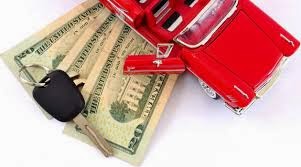
Second Chance Credit Auto Loans
Buying a car brings on the stress no matter how you slice it -- especially if you wind up slicing a lemon.
From betting on a good price for your old car and scrimping dough for the down payment to picking out the make and model that best fits your family and lifestyle, you've got a lot to think about ... and a lot to watch out for. That "great price" you're getting for your old car may be nullified by inflated costs on the new one, or draconian loan terms, one of the sleaziest car-sales tactics in the book.
Indeed, consumer advocates say Americans often let their guard down too early and get taken for a ride when it comes to their car loan. Not ready to get the raw end of the deal? Read on to find out what you need to know to protect yourself from landing in a bad loan pothole.
Chris Kukla, senior counsel for government affairs at the Center for Responsible Lending, stresses that dealerships don't just make money on the car itself. "The dealer's going to try to sell you on a whole other host of products. The finance office is responsible for about 50% of dealer profits," Kukla says, so don't let your guard down when you sit down to sign the contract.
"They sell credit insurance, extended warranties, vehicle service contracts, security systems, tire and wheel protection and gap coverage," Kukla explains. "If you finance through the dealer, you're going to have to face that gauntlet."
These ancillary products are always pitched as ways to "protect" your new investment; dealerships bank on the fact that customers will feel so mentally worn out from the buying process that they'll think, "Gee, that sounds like a smart move." In reality, says Kukla, it's only a smart move for them.
Though recent legislation has cracked down on sneaky lending practices when it comes to mortgage loans and credit cards, auto dealers banded together and lobbied Congress for exemption from the new rules -- selling Washington on the idea as only car salesmen can.
"It's particularly unfortunate that the auto dealers were exempted," says Steve Verdier, executive vice president and director of congressional affairs at the Independent Community Bankers of America, who calls this a "Wild West" situation. "There really was no substantive justification for that at all from a consumer standpoint," he says. Patrick Keefe, spokesman for Credit Union National Association, confirmed to WalletPop that it's a buyer-beware market out there when it comes to car loans.
As a result, auto financing takes place without a lot of the oversight many Americans just assume is part of any financial transaction. Dealerships can -- and do -- mark up the rates they get from banks, and get to pocket the difference between the bank's rate and what you pay. "Car dealers can increase your rate, and they're under no obligation to tell you the markup exists," warns Kukla. Your best bet, he says, is to shop around so you know what the current rates are, then get approved for a loan on your own.
In my recent experience, that's exactly how things played out. My husband and I were looking for a new car, and the one we'd picked out didn't have any special financing incentives, so we did plenty of legwork to make sure we got the best rate we could find. Although the dealership assured us we could finance through them and get the same rates as by shopping around, we shopped around anyway, calling or visiting a handful of local bank and credit union branches in the two weeks leading up to the day when we decided to get the car. (We didn't share this schedule with the dealership, though, since we still wanted to haggle and didn't want to tip our hand too early.) We secured what we thought was a very good rate, lower than anything else we'd seen, at a credit union near our home.
We'd also figured out how much we wanted to pay for the car and how much we'd need to finance -- so we had a good sense of how much we'd need to borrow when we met with the loan officer at the credit union. After we got approved, we went back to the dealership and hammered out the purchase price of the car. Then the salesman ushered us into the financing office. Sure enough, we were subject to sales pitches for obscure kinds of insurance, extended warranties and applications of rust inhibitors and the like.
I switched my brain onto autopilot and said "no" numerous times. Then the finance guy (maybe I should refer to him as a salesman, too) ran our credit and came back with a handful of APRs, but the credit union one we'd found was nearly two percentage points lower, including the quarter-point discount we got by agreeing to have the payment taken out of our credit union savings account each month.
Two percentage points on the price of a new car adds up to a significant chunk of change over the life of the loan, and we were very glad we hadn't just taken what the dealership offered. We were lucky in that both of our credit scores were pretty good, so we had access to traditional financing. According to Kukla, Americans who don't have access to these channels and are forced to go through the dealer if they want to finance a vehicle are much more vulnerable to being victimized.
Kukla says one of the most common scams is what's referred to as "yo-yo financing."
What happens here is a dealer will give you the car to take home, assure you verbally that you'll get a particular interest rate but claim they need a day or two to finalize that rate. The contract will have a blank spot by the interest rate or use the word "conditional." A day or two later, the dealership calls the customer back and tells them they need to come into the dealership. Then they tell the customer that they can't get the promised financing and they have to pay a much higher interest rate if they want to keep the vehicle. Many people feel intimidated and trapped by this, so they agree to the higher rate.
Our experts all say: Never take a vehicle based on an incomplete or conditional contract.
Kathleen Keest, senior policy counsel at the Center for Responsible Lending and a former staffer with the Iowa Attorney General, says cars on the lot without prices signal another red flag. Keest says some shady dealers will suss out, through careful questioning, how much money you have and make that the starting point for negotiations. "The choice is based on your money capacity, not your car needs," she says. Often, she adds, dealers will use sneaky, even illegal tricks to pull your credit before you even start talking price. Knowing your financial situation gives them a leg up. If, for instance, they see you have blemished credit, they may feel bold enough to stick you with a higher interest rate if they believe you can't get financing at a bank or credit union.
To find out more about those tricks -- and how to avoid them -- WalletPop spoke with Thomas Domonoske, a lawyer with the Legal Aid Justice Center in Charlottesville, Va. First of all, Domonoske says, don't sign anything until you're ready to negotiate terms. Even if the dealer says a form is purely informational or will be used to enter you into a contest, there could be fine print in there that authorizes them to pull your credit report. Keep the conversation focused on the price of the vehicle, and don't talk about financing until after you've nailed down how much you're going to pay for it.
Also, while credit reporting agencies ideally like to have your name, address and Social Security number to provide a report, dealerships don't need all that info to get a tentative picture of your finances. "If they ask to see your driver's license, you've given them enough information," warns Domonoske. If you want to test-drive the vehicle, do so after you've hashed out the price. (After all, car dealers know that if you become emotionally attached to a vehicle, even in the slightest, you negotiate from a weaker hand.)
"The best way to buy a car is to negotiate one number and one number only," Domonoske advises. "How many dollars do I have to give you to drive the car off the lot?" If all you talk about is the price of the car, the dealer will have no way to illegally access your credit. Finally, Domonoske says, "Don't answer [if they ask you] 'How much can you afford?' That has nothing to do with how much the car dealer is willing to sell that car for."
Second Chance Credit Auto Loans



















